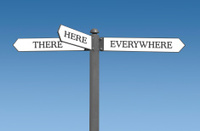By Amy Johnson — Kōwhai Head Teacher – Preschool
Dr. Maria Montessori was a genius. There I said it. And I feel like I can justifiably make such a claim. After 20 years studying and considering her words and ideas, plus 20 more years experiencing her legacy through my schooling and upbringing, I am still challenged and inspired by her quotes. One such quote found me recently and I figure this newsletter is a perfect place for me to share my thoughts with you all.
“And so we discovered that education is not something which the teacher does, but that it is a natural process which develops spontaneously in the human being. It is not acquired by listening to words, but in virtue of experiences in which the child acts on his environment. The teacher’s task is not to talk, but to prepare and arrange a series of motives for cultural activity in a special environment made for the child.”
The Absorbent Mind. Amsterdam: Montessori-Pierson Publishing Company, 2007. p 7
Ok. Now read it again. Education is a natural process. A spontaneous process. One that happens in humans… every human. Ever! Wait, if education isn’t just happening with a teacher in school then does that mean it is happening everywhere? Well, actually… yes. Is your child being educated holding the neighbour’s kitten? Yes. In the car on the way to school? Yes. In the grocery store or all the other places that we consider mundane and ordinary? Yes! That is how your child becomes, to use Dr. Montessori’s term, “a citizen of his time and place.” It is how our tamariki learn their culture, their language, their art, their humour and in the first 6 years it is how they create their personality. She says that education is not what happens when someone talks to you about their skill or knowledge or even their understanding or passion, but rather through the child’s own experiences, their actions and their effect on their environment. With our youngest tamariki, this is most often their experiences with the physical and emotional environment. For older tamariki it is their social environment that expands into their cultural, societal and even global environments with which they engage. But of course Dr. Montessori doesn’t let the teacher off the hook here – she leaves us as creators, caretakers and guides for ‘motives of cultural activity’ in the special environment of the children’s community, designed exactly to suit both the individual and the collective phase of development. No small task, let me tell you. But one that I know myself and my colleagues are still inspired by every day.
